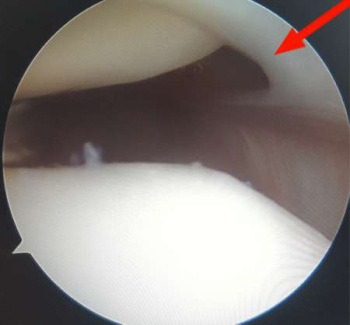Plica syndrome
Table of contents
What is a mediopatellar plica?
A plica is a fold of the inner joint skin that usually runs from the inside of the knee joint towards the centre (plica mediopatellaris). Plicae (plural of plica) develop during embryonic development and usually regress as the person grows up. However, a plica often remains and can cause pain in the knee joint under certain conditions. In most cases, a plica goes unnoticed and does not cause any discomfort. However, if the plica is larger, it can get stuck between the kneecap (patella) and the thigh bone (femur) and cause pain. This is called plica syndrome. The constant friction can subsequently lead to cartilage damage.
Symptoms of plica syndrome
Pain occurs especially when the knee joint is loaded (frequent stretching and bending) and is localised to the inside and back of the kneecap (patella). Those affected often experience a snapping sensation when moving the knee joint. If there is already cartilage damage, pain can also occur at rest.
Diagnosis of plica syndrome
A thorough clinical examination can already raise the suspicion of plica syndrome. A detailed discussion with the patient is also helpful, in which the exact location and severity of the pain are determined. Magnetic resonance imaging (MRI) usually shows the presence of a plica, its location and size. However, there are also cases where an MRI examination does not lead to any results because the plica only becomes trapped in the joint in a certain position of the knee joint. If there is a clear clinical suspicion of plica syndrome in these cases, a diagnostic arthroscopy can be performed. During the arthroscopy, the knee joint can be moved through and the plica can be detected with a camera.

Treatment for plica syndrome
At first, you can try to treat plica syndrome conservatively, i.e. without surgery. It is important to avoid excessive physical stress, especially movements that put a lot of strain on the knee joint. Anti-inflammatory and painkilling medication can be taken to support the treatment. If conservative treatment is unsuccessful or if the plica has already caused cartilage damage, surgical removal of the plica in an arthroscopy is necessary.